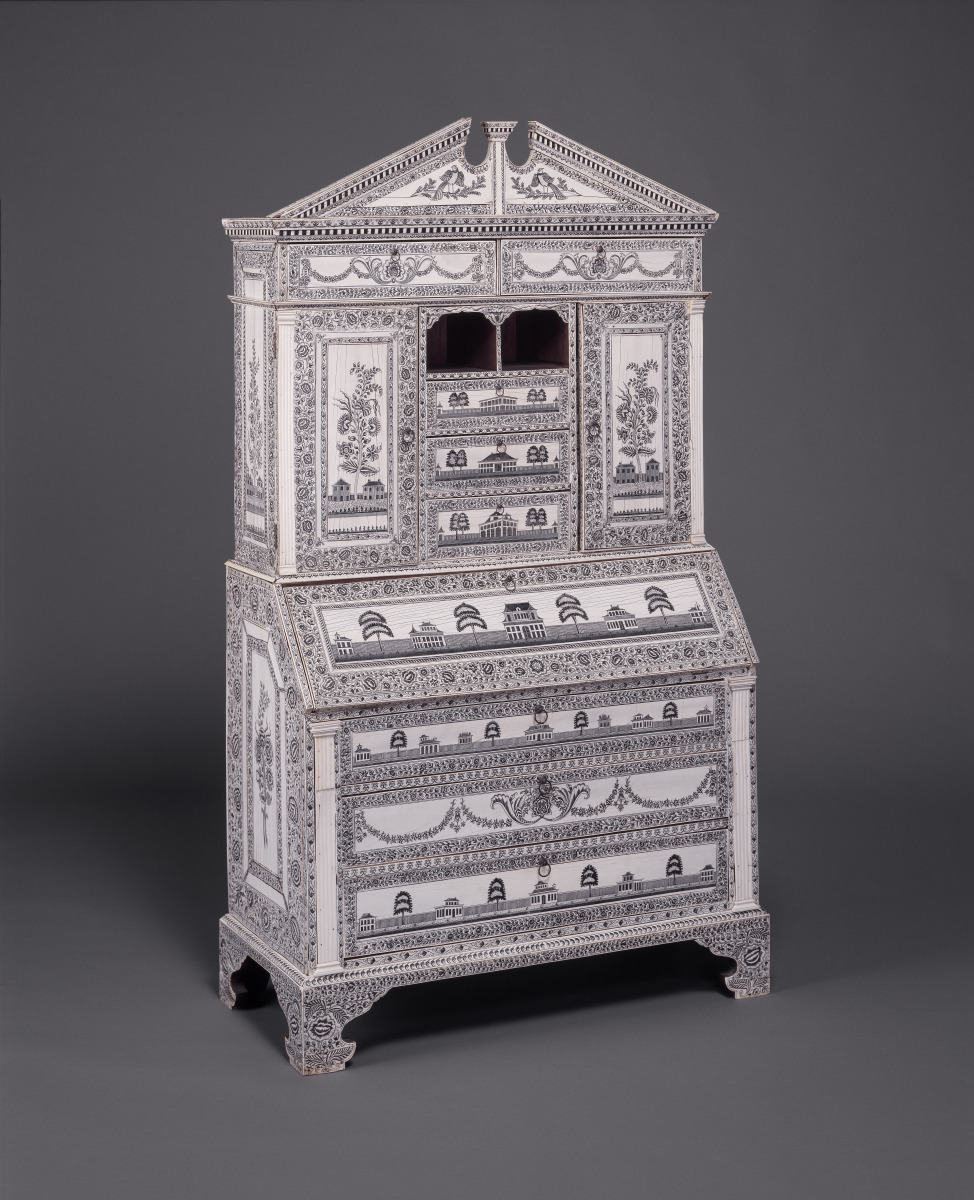
Diminutive Ivory-clad Drop-front Secretary (Alternate Title)
Unknown (Artist)
This drop-front secretary reflects the expanding boundaries of American commerce and taste. In March 1784, the frigate United States, owned by influential merchant Thomas Willing, departed Philadelphia for China. Along the way, it was rerouted to Pondicherry, India. Among its returning cargo was this delicate secretary, subsequently given to Willing’s daughter, influential Philadelphia socialite Anne Willing Bingham. Made in Vizagapatam, the secretary belongs to a body of elaborately detailed work intended for the Western market. Clad in pale ivory inscribed with narrative imagery, it blends an English form with Indian materials and patterns derived from local textiles and Western prints. These works were associated with grand households in India and England.
They also suited the Binghams. Anne was the wife of William Bingham, a wealthy merchant, banker, and politician. Their home, Mansion House, was the grandest in Philadelphia and a favorite gathering place of the local elite. Guests considered the secretary a “curiosity,” but also evidence of the Binghams’ sophisticated taste. Halfway around the globe, the governor of Madras entertained guests amid an entire suite of Vizagapatam work – subsequently purchased by King George III of England.
Robert C. Alberts, The Golden Voyage: The Life and Times of William Bingham, 1762-1804,New York: Houghton-Mifflin, 1969.
Sinappak Arasaratnam, Merchants, Companies and Commerce on the Coromandel Coast, 1650-1740, Delhi and New York: Oxford University Press, 1986.
G. Bhagat, Americans In India, New York: New York University Press, 1970.
Amin Jaffer, Furniture from British India and Ceylon: A Catalogue of the Collections in the Victoria and Albert Museum and the Peabody Essex Museum, Salem, Massachusetts: Peabody Essex Museum, 2001.
Amin Jaffer, "Ivory-inlaid and veneered furniture of Vizagapatam, India, 1700-1825," The Magazine Antiques, Vol. CLIX, No. 2, February 2001, pp. 342-349.
Dhirendra Nath Varma, "Vizakhapatnam Ivory Carving," in Decorative Arts of India, ed. M. I. Nigam, Hyderabad: Salar Jung Museum,1987, pp. 226-227.
[From the Curatorial Write-Up/Acquisistion Justification by Dr. David Park Curry, Curator of American Arts, 6 November 2001]
Some object records are not complete and do not reflect VMFA's full and current knowledge. VMFA makes routine updates as records are reviewed and enhanced.

